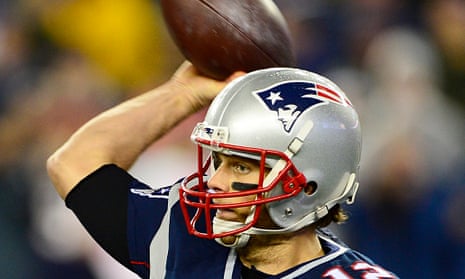The Super Bowl has historically been a seminal marketing event for real-time social media activations. It really began with Oreo’s famous tweet back in 2013 (“You can still dunk in the dark”) which capitalised on an in-game power outage. It proved that quick creative thinking, even coupled with a semi-subtle sales push, can capture the attention of the online community.
Since then, social has become an even stronger influence on event-focused marketing. Brand strategies around tournaments such as Wimbledon and the 2014 Fifa World Cup were increasingly focused on, and in some cases led by, social. But the formula of “brand + event = marketing success” doesn’t necessarily add up. There are some key considerations that any marketer should think about when looking to capitalise on event conversations.
What are you doing here?
Fans care about what’s happening on the field first and foremost. During a sporting event such as the Super Bowl, fans will be inundated with sports-focused and brand-led content. Importantly, these fans will be unforgiving of anything that doesn’t fit with their experience.
Always think: audience first. What is their reason for retweeting or sharing your content? If your brand or campaign does not have a natural affiliation with the sport, or a relevant message to talk about, stay away.
Funny, we just got hungry for pizza with red pepper flakes. #RandomNotRandom #SuperBowl
— Domino's Pizza (@dominos) February 3, 2014
Domino’s Pizza’s awkward tweets from last year’s Super Bowl showed that you can’t shoehorn yourself into a conversation. Fans will either call you out or ignore your efforts. All that’s in it is for your brand is embarrassment or a potential waste of money. Only choose to get involved with events that fit with your brand and your overall marketing strategy.
Preparation is key
Once you’ve decided that an event is relevant to you, the next step is preparation – and plenty of it. There are hundreds of potential moments you could activate against in any sporting event, so plan meticulously to ensure that you know your moments and that you are ready for every possibility.
Spend time mapping every possible scenario and trying to predict the unpredictable. Come game time, everyone in the team should understand the overall vision, the moments that you’re looking for and importantly, their roles and responsibilities. The publishing process should be seamless; you can’t afford to waste any time when the right moment comes along.
Before the World Cup, Adidas (one of our clients) planned its social media campaign six months in advance. By May, the brand was ready to react to every crucial moment, from the rippling of a net to a sending off. In a social marketplace where being first was key, this kind of prep is vital. Of course, to deliver on all of this, you need to build a bespoke, committed and passionate team first.
Understand your audience
Make sure you do your research: speak your fans’ language, in the right tone of voice. Your marketing team should know the sport inside out, from the history to the culture to the nuances. Get to know the channels on which your target audience will be communicating. Twitter is an obvious real-time opportunity, but don’t overlook the potential of platforms like YouTube for getting closer to fans with authentic branded content, or Tumblr to drive deeper levels of engagement. Use data to understand your consumers and how to accelerate the conversation with them. For example, younger Twitter users react well if provided with short, quirky video and photography featuring sports and entertainment talent.
Timeliness, great copy and creative is vital across all platforms. This will inspire a “badge of honour” mentality: if your audience identifies with your content, they will share it, there and then. Brands and publishers have a limited window of opportunity to deliver this to fans so learn what works and what doesn’t. Be ready to adapt accordingly.
Be bold
To be successful, brands have to be bold and brave in their creative. Quality content is more important than ever; in today’s crowded newsfeeds, you have to say something that’s different and makes an impact in order to stand out from the pack and cut through. You need a point of view, a story and a killer visual to bring it to life. You should also be prepared to back your best work with paid media investment. Social is no longer a free marketplace for brands, but a great piece of creative work with the right strategic investment will produce results.
Aisling McCarthy is head of sports at We Are Social
More like this
Three dos for content marketers in 2015
Sensory marketing: the brands appealing to all five senses
From real-time to any time: lessons in 24/7 marketing
To get weekly news analysis, job alerts and event notifications direct to your inbox, sign up free for Media Network membership.
All Guardian Media Network content is editorially independent except for pieces labelled “Brought to you by” – find out more here.

Comments (…)
Sign in or create your Guardian account to join the discussion